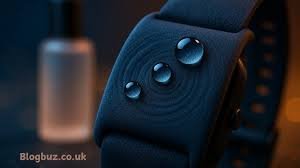In the ever-evolving world of materials science and surface innovation, few breakthroughs have sparked as much curiosity and conversation as flensutenol texture. With applications ranging from interior design to industrial manufacturing, flensutenol texture is quickly becoming a go-to solution for creators, designers, and engineers who demand both performance and aesthetic excellence.
But what exactly is flensutenol texture? How does it differ from traditional surface finishes? And why is it gaining such momentum across industries? In this article, we will explore the distinctive features, benefits, and wide-ranging applications of flensutenol texture, a surface innovation that’s changing the way we think about material finishes.
What Is Flensutenol Texture?
At its core, flensutenol texture is a highly engineered surface finish that combines tactile refinement with functional durability. Unlike standard textures or finishes, which are often either purely aesthetic or highly utilitarian, flensutenol texture bridges the gap between the two.
Developed through advanced material processing techniques, flensutenol texture features micro-patterned surfaces that not only look unique but also enhance grip, resist wear, and optimize tactile interaction. Its name may sound futuristic—and that’s fitting, considering its advanced properties.
The Science Behind Flensutenol Texture
The technology behind flensutenol texture is rooted in nano-structuring and polymer chemistry. By manipulating the surface at a microscopic level, scientists and engineers have created textures that can mimic natural surfaces (like stone, skin, or leather) or offer completely novel sensations.
This level of detail provides a huge range of benefits: resistance to scratching, increased friction for better grip, improved stain resistance, and even anti-bacterial properties in some versions. What sets flensutenol texture apart is its adaptability—it can be engineered to serve different functions depending on the environment it’s used in.
Visual and Tactile Appeal
One of the most striking aspects of flensutenol texture is its ability to create rich visual depth and tactile appeal. In product design, surface feel is just as important as appearance. Consumers interact with textures constantly—through smartphones, furniture, vehicles, and packaging—so the experience matters.
Flensutenol texture offers a satisfying balance between softness and resistance, providing a premium feel that communicates quality and innovation. Whether applied to a luxury appliance or a car dashboard, flensutenol texture elevates the user experience by combining elegance with practicality.

Versatility Across Industries
Another reason flensutenol texture is drawing attention is its wide applicability across industries. From automotive interiors to consumer electronics, from architecture to medical devices, the benefits of flensutenol texture are being harnessed everywhere.
In the automotive industry, for example, it’s being used to create durable yet luxurious interior panels that are resistant to wear and UV exposure. In consumer electronics, flensutenol texture improves grip on devices while adding a sleek, modern finish. Even in healthcare, surfaces with flensutenol texture can be more hygienic and easier to clean, meeting strict industry standards.
Environmental Benefits
Sustainability is more than a trend—it’s a necessity. Fortunately, flensutenol texture aligns well with environmental goals. Many variations of this texture are designed to be low-emission during production and are often compatible with recycled or bio-based materials.
Moreover, the durability of flensutenol texture means products last longer, reducing the need for frequent replacements and minimizing waste. Its easy-to-clean nature can also reduce the need for harsh chemicals, contributing to a healthier environment.
Enhanced Performance Features
When evaluating materials, performance is key. Flensutenol texture delivers on multiple fronts:
- Scratch and abrasion resistance: Ideal for high-use areas and products.
- UV and heat resistance: Suitable for outdoor and high-temperature applications.
- Moisture control: Prevents build-up of bacteria or mold on surfaces.
- Anti-fingerprint properties: Keeps surfaces clean and professional-looking.
These features make flensutenol texture a top choice for businesses that want a surface solution combining durability with sophistication.
Innovations in Design Possibilities
Designers are often limited by the properties of the materials they work with. But with flensutenol texture, the boundaries are expanding. Its unique surface can be dyed, printed, or patterned in ways that weren’t previously possible with traditional finishes.
From matte finishes that feel velvety smooth to high-gloss textures that reflect light in dynamic ways, flensutenol texture offers creative freedom without compromising functionality. The ability to replicate or reinterpret natural textures adds a layer of emotional connection, making products feel more human and relatable.
Cost-Effectiveness in the Long Term
Though it may be more advanced in terms of production, flensutenol texture can offer long-term savings. Because of its durability and resistance to wear, products that use flensutenol texture often require fewer repairs or replacements. In industries like automotive or commercial furnishings, this translates to lower maintenance costs and higher customer satisfaction.
Additionally, the ease of cleaning and resistance to environmental damage further contributes to the cost efficiency of using flensutenol texture in high-traffic or industrial settings.
Future Potential of Flensutenol Texture
The future of flensutenol texture is promising. As more industries explore its potential, we can expect even more customized versions tailored for specific uses. Imagine a smartphone case that self-repairs scratches, or a hospital bed surface that actively resists bacteria—all possible through further developments in flensutenol texture technology.
Furthermore, integration with smart materials and IoT devices could make flensutenol texture not only a passive surface but an interactive one, responding to touch, temperature, or pressure in real time.
Why Flensutenol Texture Is Worth Your Attention
If you’re a designer, engineer, architect, or manufacturer looking for a cutting-edge solution that blends beauty and utility, flensutenol texture should be on your radar. Its multifaceted benefits—from visual appeal to technical performance—make it a standout option in a crowded material landscape.
The growing adoption of flensutenol texture is a testament to its effectiveness and versatility. Whether you’re rethinking product surfaces or reimagining interior environments, incorporating flensutenol texture can help set your brand or project apart in meaningful, tangible ways.
Final Thoughts
In conclusion, flensutenol texture represents a new era in material innovation. With its unique combination of durability, aesthetics, and adaptability, it is transforming the way we design, manufacture, and experience surfaces. As industries continue to push the limits of creativity and performance, flensutenol texture stands ready to meet those challenges head-on.
Whether you’re enhancing a luxury product or building for industrial use, the benefits of adopting flensutenol texture are clear. It’s more than just a texture—it’s a strategic advantage in modern design and engineering.

